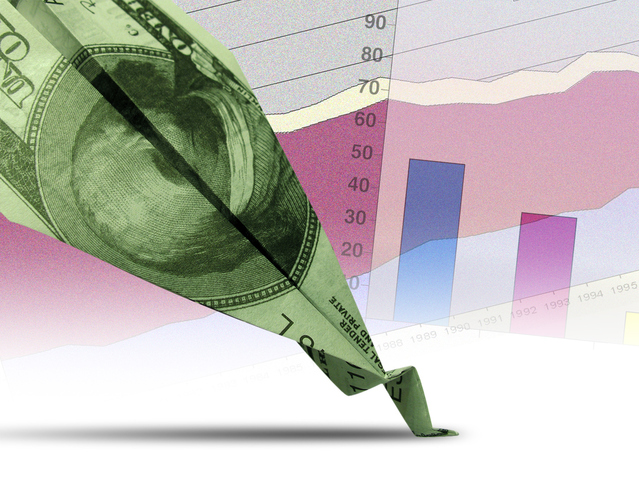In 2008, the S&P 500 Index was down a whopping 37%. Other stock indices and many mutual funds did even worse. Perhaps the worst part of the 2008 crash was that diversification didn’t work. Correlations went to 1. You couldn’t hide out in international stocks, or small cap, or high yield bonds. They all went down. With today’s global economy, if the US catches a cold, the rest of the world becomes very sick. This is bad news for investors who thought they were safe by diversifying globally.
Since 2009, the market has been up. Just like Autumn turns to Winter, there will undoubtedly be another recession and bear market for investors in the future. On average, bear markets occur every 5-6 years, so many argue that we are already overdue. While we don’t know when this will ultimately occur, it’s not a matter of “predicting” a bear market, but being prepared.
If you’re a long-term investor, you can recover from years like 2008. In fact, it’s an opportunity to buy more shares while they are on sale. All that matters to you is that the returns are strong over the next decade or longer. However, if you were planning to retire in 2009, a year like 2008 can potentially derail your plans. Whether your retirement strategy involves a 4% withdrawal rate, buying an annuity, or investing for income, taking a 37% hit to your principal will certainly impact the amount of retirement income you can generate from your portfolio.
Even worse off were the people who retired in 2007, because they didn’t have the option of delaying retirement. If you retired with $1 million on January 1, 2007, and took withdrawals of 4% ($40,000 a year), you would have ended 2008 with less than $600,000 if you had invested in an S&P 500 Index fund.
There is a crucial window from 5 years before retirement to 5 years into retirement, when a large drop could have a major impact on your retirement success. Even if the market later rebounds, as it always has historically, retirees have the risk that their withdrawals could deplete their shares and they are still unable to recover. Financial planners call this sequence of returns risk.
We are starting a new portfolio model specifically to address sequence of returns risk by investing in a portfolio with significantly lower volatility. Our new Defensive Managers Select portfolio uses institutional funds with a disciplined quantitative or fundamental process to invest with less risk. Our aim is to approximate the return of a 60/40 portfolio, but with with much lower price fluctuation, as measured by standard deviation. We use funds which have a demonstrated track record of delivering low volatility, smaller magnitude of losses, and consistent positive returns.
The portfolio can include active managers, low volatility ETFs, alternative strategies, and cash. Portfolios will typically own 4-8 different funds, which gives us diversification of manager and style, in addition to stock and bond diversification. How did these funds do in 2008? While the S&P 500 Index was down 37%, three of our allocation funds were down 9.8%, 4.6%, and 0.5%. Although past performance is no guarantee of future results, we believe that having a disciplined risk strategy is better than not having any strategy and simply taking market results.
Defensive Managers Select takes a different approach than our traditional Premier Wealth Management portfolios. The Premier Wealth Management portfolios remain our recommended solution for accumulation and for investors who do not require withdrawals within five years. These portfolios use passive strategies, which are very low cost, tax efficient, and I believe will deliver superior long-term results for investors. Implicit in being invested in a passive strategy is that you have the time and resources to remain invested if the market ever takes another 37% plunge.
The Defensive Managers Select portfolio is not designed to beat the market. Most managers do not beat the market over time, and track records have no predictive accuracy as to which funds will beat the market going forward. What is more consistent is volatility. We are buying those funds with a style, process, and track record of low volatility. Pre-retirees don’t need to hit home runs, they just need to make sure that they aren’t going to be wiped out in the next bear market.
No one wants to think about another downturn, but there’s old saying that “the best time to fix the roof is when the sun is shining”. If you are within 5 years of retirement, don’t wait until there is a big drop to decide to shift your portfolio strategy to a more conservative posture. If you wait, you are just locking in your losses and diminishing your chances of recovery. The market is up this year, and the sun is shining. Now is the right time to adopt a defensive strategy.
Let’s schedule a call to talk about your income requirements and retirement goals. I don’t see a lot of other firms offering truly defensive retirement strategies, or making any distinction between accumulation and retirement objectives. This is a unique approach and one which I am happy to compare to what you are doing today. If the possibility of a bear market, or God forbid, another 2008, would hurt your retirement, let’s address that risk before it occurs.
Please note that the objective of this investment strategy is growth and not preservation of capital. While our goal is low volatility, that is no guarantee that losses will not occur.














